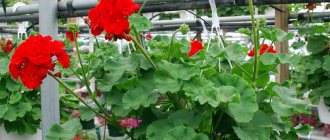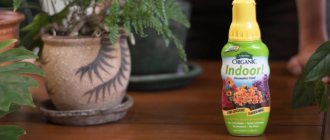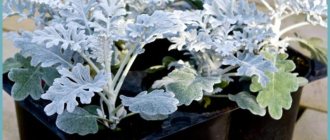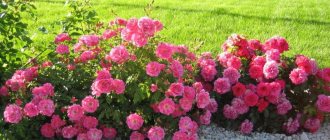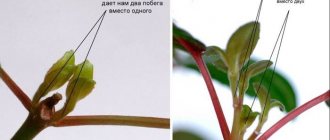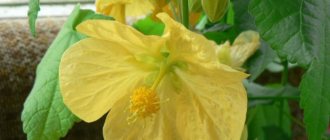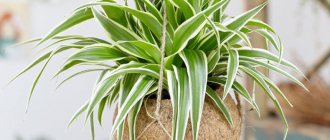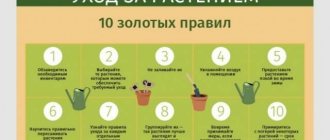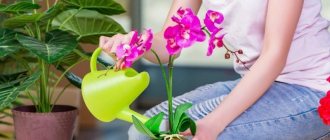Caring for indoor plants and flowers Indoor plants not only create coziness in the home and are the best decoration for the interior, but also produce oxygen, purify and disinfect the air, and humidify it. Some cultures help replace pharmaceutical preparations and medications; they can be used to care for the skin. But in order for them to please you and decorate your home, you need to properly care for them.
Light
All plants live mainly only due to light. Its quantity is decisive in choosing pets. Indoors these are windows and artificial sources (all kinds of lamps).
Most flowers do best in window areas where there is sun during the afternoon, before or after lunch. With such illumination, 90% of the range of plants offered in flower shops can be easily grown. If you have a north window, then the choice of colors becomes a little smaller. If the direction of the window is south, you should carefully monitor your pets in the summer, shade them or move them a little further from the window to avoid sunburn.
If you really want to place the plant deep in the room, artificial lighting is used. It should work for 8-12 hours (there are sockets with a timer for this) during the day and be located at a distance of 30 cm to 1 m from the plant. It is best to use fluorescent lamps with a special “flora” spectrum. Spot, “ceiling” lamps provide less illumination and burn out faster. One fluorescent lamp may be enough to grow a group of 3-5 small plants or one, 1-1.2 m in size. You also need to take into account that not all plants develop well and do not lose their decorative appearance in artificial light.
Feeding indoor plants
Providing flowers with enough nutrients is another important task in their maintenance. In winter they do not need feeding, but in the spring and summer months it is recommended to use mineral fertilizers at least 3 times:
- in the spring, when the dormant period has ended;
- before the formation of buds;
- after flowering is complete.
will take care of all the care of potted plants. We work with organizations and individuals. To view prices for services or get advice, call us by phone.
Prices for plant care.
| Plant care (for organizations) | Things | Cost of service per month | Note |
| Height up to 70 cm. | 1 | 450 rub. | The price includes all necessary procedures and medications |
| Height up to 1.5 meters | 1 | 550 rub. | |
| Height up to 2.5 meters | 1 | 750 rub. | |
| Height from 2.5 meters | 1 | 1,000 rub. | |
| A discount is provided based on the number of plants served | |||
All prices include VAT.
Leave a request for services
your name
Telephone
By submitting data I accept the terms of the user agreement
Send
Caring for flowers while on vacation
So, before leaving on vacation, we seal all the windows. And, if it is summer, the air in the room is heated by the scorching sun. In winter, heating does the same. Therefore, the plants are positioned so that sunlight necessarily falls on them, the flowers are placed in a fairly dense group (the flowers create a more comfortable microclimate for themselves), while choosing the coolest possible place. Air humidity is maintained using the methods described above.
A few examples. Kitchen sink. Fill it to the brim with water and plug the hole. We group the plants side by side on a damp cloth mat, one end of which is lowered into a sink filled with water. Air humidity is ensured for several days. Or we place the flowers on the floor (the coolest air is below), and place bowls of water between them.
Separately, I would like to dwell on the methods of watering the soil.
For this you can use, for example, ceramic humidifiers. They are usually made in the form of funny figures, to the bottom of which is attached a small oblong reservoir for water made of unfired clay. The figurine is stuck into the ground with a reservoir of water and gradually releases moisture to the roots of the plant through the unburnt part.
It is also believed that soil moisture can be achieved using a container of water and a cord (such as twine). To do this, a wet cord is stuck into the soil of the plant in several places, the other end of which is placed in water. Thus, water constantly reaches the ground in small quantities.
There are more efficient and accurate irrigation systems. One of them works from the network. It turns on for a minute once a day and “pours” from 40 to 60 ml into the pot. At the same time, up to 36 plants can be watered through special distributors (supplied in the kit). Based on the number of flowers and water consumption per plant per day, as well as the number of days you will be absent, calculate the volume of water required for watering. Fill a container of suitable volume with water and immerse the mini-pump in it. Ready.
Air humidity
Caring for indoor flowers in low humidity conditions is difficult. Even abundant watering will not give results: the plant will drop its buds and stop growing. To increase humidity, we recommend using several methods:
- Install a humidifier.
- Spray regularly (during the growth period this can be done both in the morning and in the evening). This care should be carried out before the first rays of the sun fall on the pot.
- Use a tray with water.
- Cover heating radiators with wet towels (the method is effective if flower pots are on the windowsill directly above the radiators).
When servicing flowers, the main thing is not to overdo it, because excess moisture in the air (especially in combination with low temperature) is fraught with another problem - rotting.
Tips for choosing colors
The range of colors offered on the market is very large. Don’t let this bother you, because the plants themselves “tell” in what conditions they want to live.
A wide leaf means that the body has adapted to compensate for the lack of light with a large area, i.e. does not tolerate direct light in summer and can be located on north-facing windows and grow in artificial light (monstera).
If the plant has a narrow leaf, it has adapted to transmit a large amount of sunlight through the crown. Those. is a light-loving plant that feels good only on eastern (western) windows, but not on the northern window and, as a rule, not under artificial light (myrtle).
Variegated varieties require more light than their green relatives - their leaves contain less green pigment chlorophyll.
Hard leathery leaves have plants that can tolerate low air humidity (ficus rubber), and, conversely, ferns (adiantum “Venus hair”) can die without additional spraying or a humidifier.
Plants with pubescent, velvety leaves (Saintpaulias, calatheas, begonias) prefer high (90% or higher) air humidity, but do not tolerate water on the leaves. In this case, the air around the plants is sprayed, creating “fog.”
Flowers that form thick trunks (cacti and their prickly counterparts, bottle plants) have a certain supply of moisture inside them, so they do not tolerate overwatering, and often in winter their soil is kept almost dry (jatropha, adenium obese, pachypodium).
As a rule, plants that have a lignified trunk and are capable of flowering and bearing fruit (ficus carica - figs, bougainvillea, citrus fruits) require a cool winter. Flowers with a green stem (Dieffenbachia) feel good at temperatures of +23-25 degrees Celsius all year round.
Most bulbous plants go dormant (shed their leaves completely) when they need a cool, dark place. They are exposed to the light as soon as the leaves or buds (hippeastrum) begin to hatch.
Rules of care
In winter and summer, caring for indoor plants has its own characteristics:
- Winter is a dormant period for potted flowers. All processes in them slow down, so they need to be watered less often. Feeding is not required at all and the need for a large amount of light (for example, for light-loving varieties) also disappears. But at this time, do not forget to remove dried leaves and monitor whether diseases have appeared.
- With the onset of spring, the flowers “wake up”, begin to bloom, and there is a need for feeding them, frequent watering and spraying. Their service begins to operate as normal.
To make flowers comfortable, it is necessary to create favorable conditions: the desired temperature, humidity and light level.
Green taboo
In the assortment of plants that can be purchased in flower shops, there are indeed flowers whose leaves contain substances that can cause skin irritation. Basically, these are representatives of the family. Euphorbiaceae (codium, spurge) and fam. Aroids (Dieffenbachia). If you wear gloves when working with the leaves of these plants (pruning, for example), you will never feel any harmful effect. On the other hand, if there are small children in the house, you need to keep an eye on them so that the beautiful, bright leaf is not tasted. Pets, as a rule, are very smart in this matter - they can “eat” all your dracaena, but they will not touch the Dieffenbachia, or at least they will not eat it.
Light mode
Caring for house plants also means creating the right level of lighting. Two criteria are important in it: intensity and duration.
- In spring and summer, during the period of active growth, flowers should be illuminated for at least 16 hours a day. If flowers constantly experience a lack of light (this is possible even with a lighting duration of 10 hours or less), then the synthesis of nutrients in them will slow down.
- To provide intense lighting, you need to place pots in rooms with southern, western or eastern windows, and avoid placing them in the corners of the room. If the room has windows facing north, lighting is required. Without it, only ferns, ivy, and cyclamen can grow successfully.
- Flowering specimens need more light.
- Being under direct sunny windows is harmful for indoor “pets”. If the windows face south and the pots are on the windowsill, then according to the rules for caring for indoor flowers, it is necessary to reduce the light intensity by attaching paper to the glass or hanging a transparent curtain.
As part of this, we not only take care of the flowers, but also give recommendations on adjusting the light intensity, on the correct placement of pots within the room, taking into account the requirements of a particular type of plant for the level of illumination.
Express diagnostics
Attentive attitude towards your charges is a good component of their health. Regularly inspect the leaves of plants from the outside and inside, evaluate the appearance of the plant. But it is better to take any action only after consulting with a specialist. The main rule of doctors is to do no harm! First, find out the cause of your flower’s “disease,” and only then begin treatment. As a rule, it is enough to slightly change the plant’s maintenance regime (water less often, remove it from the scorching sun, feed it) and your pet’s health will improve.
Tip 1: When to water indoor plants
My grandmother also told me how to water flowers correctly. In winter and autumn, plants need to be watered in the morning. In summer and spring - in the evening.
This is due to the fact that when watering, the temperature of the earthen coma decreases significantly. In turn, cooling the soil leads to a decrease in the activity of the root system, resulting in a decrease in the ability to absorb water.
Indoor plants are watered in the evening in summer, and in the morning in winter.
Thus, in the hotter seasons, flowers do not have enough moisture for transpiration, so they are watered after the general air temperature has dropped. In the winter-autumn period, watering is carried out in the morning, which allows the temperature of the earthen coma to rise during the day and avoid hypothermia at night.
Buying plants.
Plants should always be purchased from specialized stores. But this will not guarantee that the plant is healthy and disease-free and you will not have problems growing it. We always inspect plants before purchasing. The choice of plants largely depends on the conditions that exist in your home. Consider lighting and temperature conditions.
Before purchasing, we inspect the plant. It must be healthy, without mechanical damage. Please note:
- the soil should not be dry; if there is a void between the lump and the walls of the pot, the plant is overdried and poorly cared for. We don't buy this plant. Lift it carefully and inspect the lump of earth, and return the flower back to the pot.
- lower leaves of plants - inspect them for pests and diseases.
- check the bottom of the pot - if there are a lot of roots, and they all came out through the drainage hole, such a plant will require replanting. If there are not many of them, then this is normal. Since most of the plants are grown on capillary bedding.
— flowering plants should have many buds and a couple of blossoming inflorescences. You can determine the color by the opened inflorescences, and the remaining buds will bloom at home.
- check for labels on the pot. Usually the name of the plant and care instructions are written there.
- the presence of a green coating on the walls of the pot or the surface of the soil, as well as moss - indicates acidification of the soil, most likely the process of rotting of the roots begins. It is better not to buy such a plant.
- if the plant is in a protective sleeve. Take out the plant and inspect it thoroughly. Since these sleeves hide a lot from your view, rot, pests, mechanical damage to leaves, broken stems.
- on purchased plants, when planting, you can find small cups; it is better to remove them, as this will harm the roots in the future. If there are several plants - the seller ties them with an elastic band - remove this too when planting.
Purchased plants can be planted immediately, but it is better to wait a couple of days and let it get used to your home.
So, you have decided on a pot, a tool, and plants. The next point is the soil. Prepare the soil for planting. There are many ready-made mixtures for planting on sale. You can prepare the soil yourself. You will also need expanded clay and perlite. Expanded clay will lie at the bottom of the pot, forming a drainage layer. And adding perlite or vermiculite to the soil will make it more loose and breathable.
The peat in which the plant was located is not suitable for growing.
- Before you start planting. You will need to remove it from the shipping pot. Carefully clean the roots from the soil. If difficulties arise, the plant can be placed in water. The soil will be saturated with moisture and it will be easier to clean it.
- Examine the roots of the plant. They must be healthy and undamaged. Remove all damaged roots. To prevent disease, soak the plant for 20 minutes in a phytosporin solution.
- We prepare the soil for planting. We put all the soil components we need into the container (peat, sand, charcoal, perlite, other types of soil). We break up the clods, remove sticks and all excess from the ground. You should get a homogeneous mixture.
- Place a layer of expanded clay on the bottom of the pot. Treat the roots of the plant with a stimulant and charcoal.
- Sprinkle soil on top of the expanded clay. There should be a hill on which you place your plant.
- Position the plant so that the root collar (the roots that extend into the trunk) is just below the edge of the pot.
- The plant should be in the center of the pot. If necessary, hold it with one hand.
- Having straightened the roots of the plant, we begin to add soil. It’s better to do it in small portions, so it will be evenly distributed in the pot. Lightly tamp it down with your hands each time. We do not allow the plant trunk to deepen and do not expose the roots.
- The root collar of the plant should be at the same level as before planting. Improper planting of a plant can have a detrimental effect on its future fate.
- Compact the soil around the edges of the pot. To do this, use spatulas or a pencil.
- Depending on your plant's requirements, pack the soil either firmly or lightly.
- Finally, water the plant thoroughly. If the soil settles, add more.
If you have planted a healthy and good plant, water it immediately. But if the plant is damaged or after an illness, then postpone watering for several days.
After planting a plant, give it a worthy place in your home. The place should be bright, without direct sunlight, without drafts. We pay special attention to the new plant. We observe for two to three weeks, be careful with watering. We fertilize after two months. Proper planting is the key to successful cultivation.
To summarize, I would like to remind you that planting plants requires careful preparation. Think over the design of a pot or flowerpot, prepare drainage, study the soil requirements of your future plant, study the requirements for watering and lighting.
If something is not suitable, choose another plant that meets all the growing requirements, taking into account all the conditions that exist in your home. Prepare the soil and tools. If you really like the chosen plant, but you cannot meet a number of conditions in your room, you can resort to additional elements. In terms of lighting, you can use additional lamps and phytolamps. To ensure air humidity, use room humidifiers.
A properly planted plant will delight you with its beauty and decorativeness for a long time. Good luck to you.
Natural fertilizers
Like other plants, house flowers require additional feeding to grow fully. Our grandmothers managed just fine without store-bought chemical additives. Everything you need can be found at home.
For example, my grandmother used water in which she washed meat as a top dressing. Flowers also love milk. For irrigation, add 1 teaspoon of milk to water (1 liter) and shake the liquid thoroughly before use. You can also use whey or the liquid remaining after making cottage cheese, but the solution will require a larger amount of dairy product (2-3 teaspoons). Thanks to this feeding, plants are saturated with calcium, phosphorus, magnesium and iron.
Another grandmother's method is adding castor oil to improve growth. It is added to water for irrigation in the ratio of 1 teaspoon of oil per 1 liter of liquid. In winter, sugar can also be added to water as an energy source. This feeding is especially useful when there is a lack of sunlight. For half a liter of water you will need 1 tablespoon of sugar. Instead of liquid fertilizer, you can simply sprinkle the soil with sugar.
